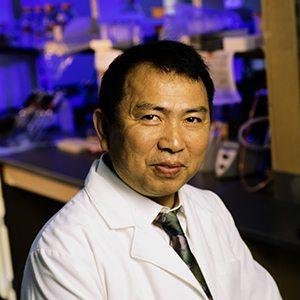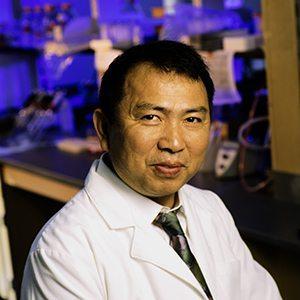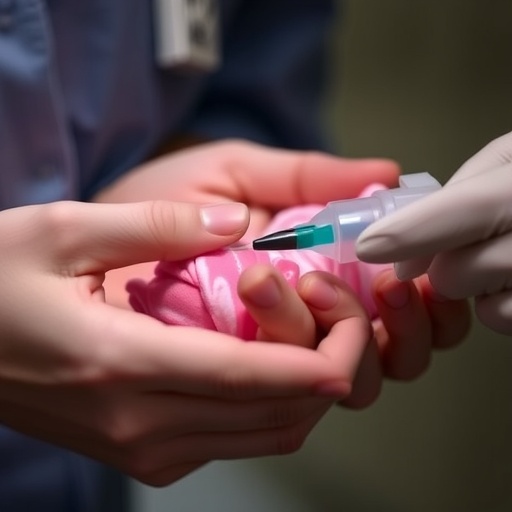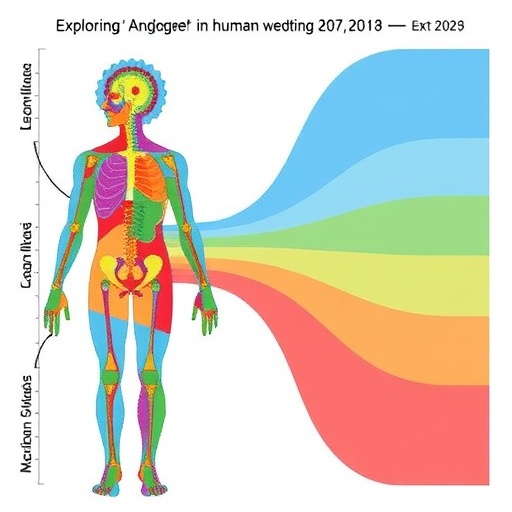
Credit: Georgia State University
ATLANTA–Researchers have found a link between dysregulated tryptophan metabolism and abdominal aortic aneurysm, a life-threatening vascular disease, according to a new study led by Georgia State University.
Abdominal aortic aneurysm is a permanent, localized enlargement of the abdominal aorta, the largest artery in the abdomen that provides blood to the organs and tissues of the abdomen, pelvis and legs. Because the abdominal aorta is one of four sections of the aorta, the body's main supplier of blood, a ruptured abdominal aortic aneurysm can cause life-threatening bleeding, according to the Mayo Clinic.
Abdominal aortic aneurysm occurs in up to 9 percent of adults older than 65 years of age, with about 15,000 deaths each year in the United States after rupture. Abdominal aortic aneurysms often grow slowly and without symptoms, making them difficult to detect.
There are no proven therapeutic strategies to block progression of the disease and rupture of the abdominal aorta. The only possible treatments appear to be endovascular or surgical repair. Information about the mechanisms and factors controlling abdominal aortic aneurysm is limited, so understanding the molecular basis for this disease, the goal of the Georgia State study, is imperative for the development of novel pharmacologic therapies.
The researchers established for the first time an association between dysregulated tryptophan metabolism and abdominal aortic aneurysm. Tryptophan, which can't be made by the body and must come from food, is necessary in human nutrition and used in the body to manufacture proteins and important substances, such as the neurotransmitter serotonin and the vitamin niacin.
The findings, published in the journal Circulation, suggest substances derived from the metabolism of tryptophan might be biomarkers for abdominal aortic aneurysm.
"Our data found a previously undescribed causative role for 3-hydroxyanthranilic acid (3-HAA), a product of tryptophan metabolism, in abdominal aortic aneurysm formation," said Dr. Ming-Hui Zou, director of the Center for Molecular and Translational Medicine at Georgia State and a Georgia Research Alliance Eminent Scholar in Molecular Medicine. "We believe agents that alter tryptophan metabolism may have therapeutic potential for preventing or treating abdominal aortic aneurysm. Our findings suggest that reducing 3-HAA may be a new target for treating cardiovascular diseases."
The kynurenine pathway is the major route for the metabolism of tryptophan, and other studies have found this pathway plays a key role in the increased prevalence of cardiovascular disease. The researchers sought to identify the role of the kynurenine pathway and its products in angiotensin II (AngII)-induced abdominal aortic aneurysm. AngII is a hormone that increases blood pressure by constricting the blood vessels and is the principal mediator for the development and progression of abdominal aortic aneurysm.
The researchers generated mice with genetic deficiencies by crossbreeding, and then infused the mice with AngII.
The study is the first to show that genetic deletion of indoleamine 2,3-dioxygenase (IDO) or the decrease in the gene expression of kynureninase (KNU) in the body restrained AngII-induced abdominal aortic aneurysm in mice deficient in apolipoprotein e.
In addition, the researchers made the discovery that 3-HAA was responsible for AngII-induced abdominal aortic aneurysm in the body.
###
Co-authors of the study include Dr. Qiongxin Wang of the University of Oklahoma Health Science Center; Drs. Ping Song, Huaiping Zhu and Imoh Okon of Georgia State; and Nan-Yang Ding and Drs. Houzao Chen and Depei Liu of the Chinese Academy of Medical Sciences and Peking Union Medical College.
The study is funded by the National Institutes of Health and Georgia Research Alliance.
Media Contact
LaTina Emerson
[email protected]
404-413-1353
@GSU_News
Georgia State University
Original Source
http://news.gsu.edu/2017/11/13/abdominal-aortic-aneurysm-linked-dysregulated-tryptophan-metabolism-study-finds/?utm_source=press_release&utm_medium=media&utm_campaign=aortic_aneurysm






